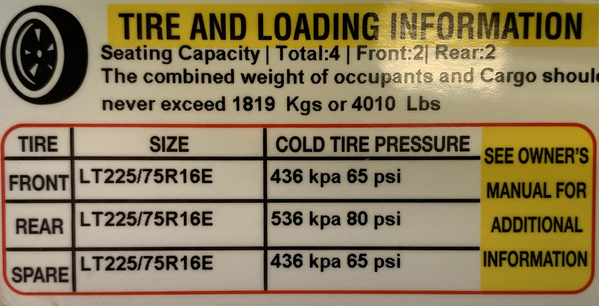I have a class C motorhome on a Chevy Express 4500 chassis. I have always set the tire pressure to manufacturer specifications prior to an outing except on the last trip. I ran out of time and instead planned to stop at a truck stop and get air there. While driving I noticed that the rig rode smoother, was less jarring, and maybe handled the same or better. Gas mileage did not seem to be affected. Compared to passenger cars, these tires are very high pressure (65 front, 80 rear). The were low by about 6% or 7% when I left. What are the consequences or down sides if I used these reduced pressures going forward?
Replies sorted oldest to newest
Are your tires original to the RV and an E load rating?
The tires are original to the RV. I am not sure about the load rating. It is stored off site.
If original they should be the E load rating stated on the tire pressure label. I just wondered if they were aftermarket/replaced whether they were a different loading (ply) or if a different brand warranted a different tire pressure.
Underinflation puts extra load on the side wall and increases risk of a blow out. One learning I had was to use a good quality gauge to ensure what I thought I had was true.
Thanks Julian.
They should be E load rating and I will check the next time I am there.
It looks like I should stay with the manufacturers PSI rating. I will compare my RV pressure gauge to another known good one. Truck tire gauges are a different animal because of the dual rear wheels along with the high pressure.
Please note that the vehicle label is a recomended tire pressure. It is a compromise on wear, performance, durability and comfort. The rating on the tire itself is the recomendation at (or near) maximum load. Your RV is built on a truck chassis, load is probably not near the RGVW.
Good information. Thanks all.



